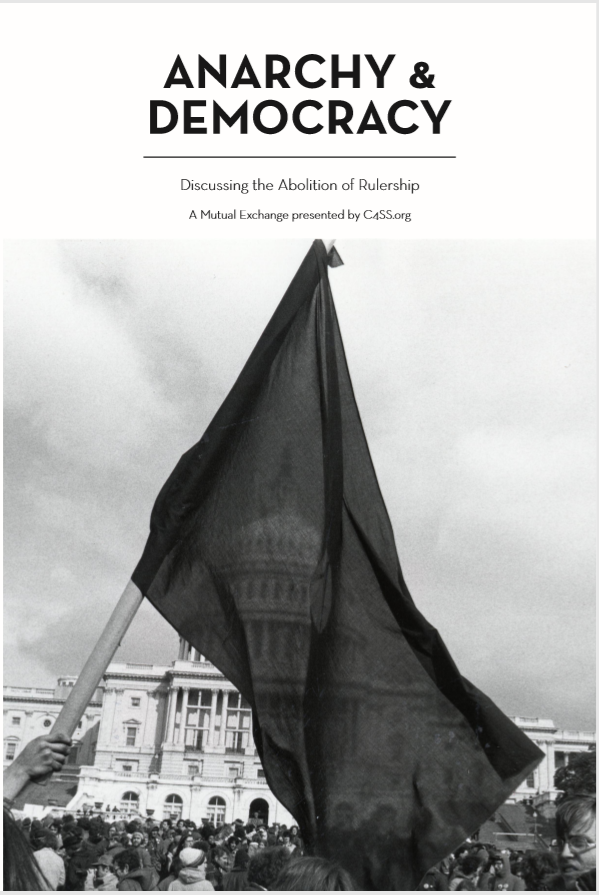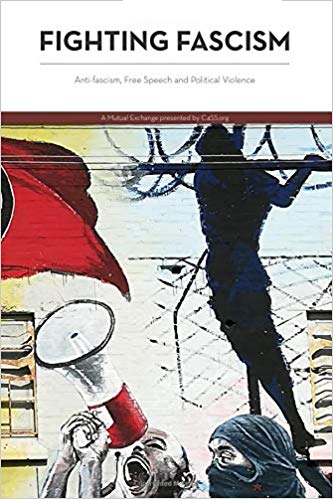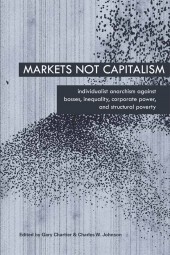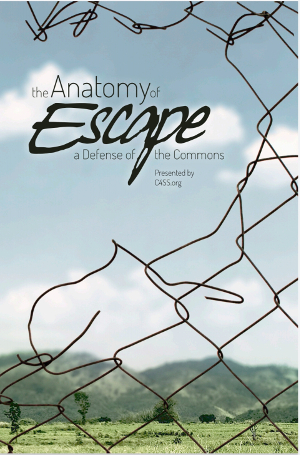Di Zachary Woodman. Originale pubblicato il 30 aprile 2019 con il titolo Avoiding the Excesses of Violence and Pacifism. Traduzione di Enrico Sanna.
Gli anarchici sono facilmente irritabili, anzi l’irritazione è forse ciò che spinge ad essere anarchici. Gli anarchici sono contro la politica convenzionale, come tutte le frange, e questo crea risonanza. Le due cose non sono necessariamente un male. Un po’ di rabbia spinge a indagare e smascherare le bugie che vengono diffuse, mentre la contestazione fa la differenza tra un movimento estremo e uno convenzionale, serve a segnalare la propria posizione ad altri anarchici, a rafforzare la critica radicale della contingenza.
Capita però che, nella foga di contestare lo status quo, la rabbia prenda il sopravvento, che ci si lasci prendere da propositi che vanno contro ciò che sta al cuore dei fondamenti che rendono affascinante l’anarchismo. Ne è un esempio il recente “Pacifismo e Inerzia” di Black Cat. Secondo l’autore, a fronte di tanti anarchici non esplicitamente pacifisti, ce ne sono tanti altri, troppi, che sono affetti da un pacifismo patologico che blocca la persona e le impedisce di esprimere la propria opposizione in maniera violenta. L’autore racconta il caso di una protesta contro la violenza poliziesca in cui gran parte dei manifestanti si è bloccata davanti ad alcuni poliziotti che presidiavano l’ingresso del palazzo comunale. Secondo l’autore, questo esempio di riluttanza sarebbe un sintomo di quell’inerzia pacifista patologica che taglia le gambe ai movimenti anarchici. Troppi sono gli anarchici, dice, che hanno ancora il “poliziotto nella testa” che impone l’obbedienza all’autorità. Black Cat conclude poi con un argomento forte denunciando l’incapacità del pacifismo di capire che “tutta la politica è violenza”.
Ci sono tre punti problematici. Primo, l’articolo sembra implicitamente dar credito alla falsa affermazione secondo cui occorre reagire all’autorità con la forza. Secondo, l’analisi dell’esempio fornito confonde un problema proprio dell’attività collettiva di ogni movimento (violento o no) con l’impulso pacifistico in sé. Terzo e più preoccupante è il fatto che l’autore pensi che, rifiutando il pacifismo si debba per forza adottare il punto di vista Schmittiano, profondamente illiberale, secondo cui la politica deve necessariamente essere violenta.
Il primo problema è che Black Cat apparentemente salta da un punto, corretto, ovvio e condiviso da quasi tutti gli anarchici, ovvero che è lecito opporsi con la forza all’autorità politica, ad un altro, molto più forte e spesso erroneo, secondo cui ognuno deve reagire all’autorità politica con la forza. Forse sono io che capisco male, ma dall’uno non deriva l’altro. Il primo è il risultato di un anarchismo filosofico ma non pacifista. L’anarchismo filosofico è quello che non riconosce né la legittimità dell’autorità politica né l’obbligo del cittadino di seguire la legge. Accettare l’anarchismo filosofico significa pensare che esiste parità morale tra rappresentanti dello stato e tutti gli altri. I rappresentanti dello stato non possiedono una moralità speciale che dia diritto ad un trattamento diverso. Chi rifiuta il pacifismo pensa che ci siano momenti in cui la forza è giustificata in difesa di se stessi o altri. Ad esempio, quando si uccide una persona perché si è ragionevolmente convinti che sia sul punto di assassinare qualcuno. I due punti citati significano che è lecito opporre violenza ai rappresentanti dello stato per la difesa propria o altrui. Il fatto che siano rappresentanti dello stato non modifica il diritto all’autodifesa.
In questa tesi, però, niente sottintende l’esistenza del diritto di usare la violenza, sempre o anche solo saltuariamente. Ad esser sinceri, credo che si tratti di casi rari. Un esempio: vedo un poliziotto che sta per uccidere un ragazzino indifeso, e capisco che per evitare la tragedia non c’è che la morte del poliziotto. Credo che sarei costretto ad agire (più o meno) così per la stessa ragione per cui mi butterei in piscina per salvare un bambino che annega. Ma nel contesto di una protesta politica aggressiva, è strano affermare che tutti hanno l’obbligo d’intervenire con la forza. Nel caso del poliziotto che punta una pistola contro un ragazzino indifeso, 1) il pericolo è imminente e 2) l’esito finale dipende unicamente dalla mia (in-)azione. Se io non agisco, c’è la quasi certezza che una persona venga uccisa all’istante; questo è il risultato della mia inazione. Nel caso della protesta aggressiva, il pericolo è ugualmente reale ma non altrettanto imminente, e nessuna azione individuale può evitarlo.
Intendiamoci, credo fermamente che i manifestanti abbiano il diritto di sfondare le porte e opporsi alla polizia. Lo stato non è il proprietario legittimo del luogo in cui si protesta e non c’è alcun obbligo morale di obbedire alla polizia. L’azione violenta diventa un diritto quando si ritiene ragionevolmente che questo sia l’unico modo per limitare l’ingiustizia dello stato, come nel caso della violenza poliziesca contro le comunità di colore. Questo non significa, però, che tutti siano moralmente obbligati ad agire così. Ci sono ragioni prudenziali che spingono certe persone a scegliere di non protestare in questa forma. C’è il rischio di subire la reazione violenta dello stato, essere arrestati, o pestati dalla polizia che è solitamente molto meglio armata e può chiedere rinforzi e soffocare un’aggressione in tempi relativamente brevi. L’arresto può significare la perdita del lavoro, non poter dar da mangiare alla famiglia; anche se mascherarsi può servire a limitare il rischio. Nessuno è obbligato a correre questi rischi semplicemente per un’azione di protesta, per quanto veemente.
Quindi sarebbe meglio se chi protesta ne sostenesse i costi più spesso? Ne dubito, perché l’azione politica, violenta e nonviolenta, ha spesso costi imprevedibili nel lungo termine. Ma non è tra gli scopi di questo mio scritto determinare empiricamente quando e dove si può agire con la forza. E qualunque sia la mia opinione personale, l’obbligo di agire con la forza non esiste.
Qualcuno obietterebbe dicendo che abbiamo l’obbligo di reagire all’ingiustizia. Probabile, ma ciò non significa che siamo obbligati a partecipare ad una manifestazione violenta. Il ragionamento ricorda quello di chi crede nell’obbligo del voto (che semmai è inutile). Pur riconoscendo un generico obbligo di reagire all’ingiustizia, si può adempiere a tale obbligo in tanti modi non esplicitamente violenti. Esiste il mutuo soccorso, le mense per i poveri, si può praticare l’agorismo per rendere irrilevante lo stato, si può protestare pacificamente, o anche scrivere articoli che sensibilizzano la gente e denunciano l’ingiustizia diffusa. Le ragioni per non partecipare all’azione violenta sono spesso valide e dettate dalla prudenza: uno può ragionevolmente ritenere di non essere fisicamente adatto, pensare che la violenza impedisca altri modi di combattere l’ingiustizia (si rischia l’espulsione dal volontariato, ad esempio), o giudicare eccessivo il costo. Occorre diversificare l’azione; è ingenuo pensare che per combattere l’ingiustizia non ci sia che pestare un poliziotto.
Ma forse Black Cat non vuole dire che si è obbligati a contribuire alla protesta violenta. Forse sono io che lo immagino arrogante mentre invece vuole dire semplicemente che occorre rifiutare la violenza più spesso. Forse, ma allora mi pare esagerato dire cose come: “Questo pacifismo deve essere rifiutato non solo a parole, ma anche con gli atti. Abbiamo rinunciato al pacifismo, ora dobbiamo rinunciare ad essere pacifisti inerti.”
Il secondo problema è che l’analisi dell’esempio citato sembra fuori luogo. L’esitazione dei manifestanti sembra più un risultato dell’azione collettiva, cosa che riguarda tutti i movimenti politici, che si esprimano violentemente o no. Non necessariamente si tratta del “poliziotto nella testa” o di un qualche impulso pacifista. Ammetto però che non ero presente alla protesta in questione, e forse Black Cat avrebbe potuto aggiungere qualcosa per specificare meglio il suo ragionamento. Da quel che si legge sembra probabile che l’esitazione derivasse dal ritenere l’azione violenta troppo costosa in termini individuali. Forse avrebbero avuto una chance se tutti, o almeno la maggioranza, avessero reagito in blocco alla polizia, laddove singolarmente la sconfitta era assicurata. Black Cat stesso lo afferma esplicitamente. Infine, se anche tutti fossero stati convinti della liceità di agire violentemente, avrebbero potuto esserci pareri discordi sull’opportunità di usare la forza in quelle circostanze. Sembra altrettanto probabile che questa protesta fosse l’ennesimo caso di dilemma del prigioniero originato dagli incentivi della situazione, un fatto che ha indotto le persone a considerare in qualche modo sbagliata l’azione violenta.
A prescindere dall’accaduto, il problema di azioni collettive di questo genere non è l’eccesso di pacifismo. Pacifisti e non pacifisti possono concordare sul fatto che non esiste alcun dovere di obbedire alla legge, l’unico disaccordo riguarda l’uso della violenza contro la legge. E c’è da dire che anche i nonviolenti corrono rischi enormi quando rifiutano passivamente il rispetto della legge. Un pacifista che, seguendo la propria coscienza, non paga le tasse o non risponde alla chiamata alle armi, può finire in galera. Una movimento che durante una protesta pacifica o un sit-in disobbedisce all’ordine di sgombero rischia la violenza poliziesca e l’arresto. Basta pensare all’arresto di Thoreau, o alle famose immagini della protesta in piazza Tienanmen, agli innumerevoli pacifisti arrestati per aver evitato la naia, o alle tante proteste nonviolente del movimento americano per i diritti civili. Il pacifista è solo una persona che rifiuta l’azione violenta contro la legge, non uno che pensa di dover obbedire in virtù di un qualche “poliziotto nella testa”. Ci sono maniere diverse, alcune buone e altre cattive, per risolvere questi problemi legati all’azione collettiva, e i pacifisti, dato il loro maggior numero di possibilità, potrebbero essere i più adatti a risolvere il problema in certe circostanze. La questione, comunque, non dipende dal fatto di ritenere l’azione violenta lecita o meno.
Ultimo problema, il più critico, riguarda l’affermazione “Tutta la politica, compresa quella anarchica, è violenza organizzata.” Qui l’opposizione allo stato pregiudica una coerente adesione ai principi dell’anarchismo. Black sostiene che tutta la politica è violenza perché se si vuole impedire la disgregazione della società occorre o far capire a tutti che ci sono principi condivisi oppure incentivare materialmente le persone a obbedire ad una determinata struttura della società. Ad ogni incentivo, quindi, deve corrispondere la minaccia della violenza, che si tratti della violenza dello stato o di quella che spinge ad agire contro lo stato.
Ma non è così. Se c’è un’intuizione importante del liberalismo che vale la pena preservare è che anche quando non c’è accordo su tutti i principi riguardanti la giustizia, c’è sempre la possibilità di generare sufficiente consenso su un insieme ristretto di principi secondari, indipendenti, dedotti dalle tradizioni culturali e filosofiche, così da rendere possibile la cooperazione sociale senza ricorrere alla forza. Come dice Jason Lee Byas, in una società giusta, tra individui c’è una “naturale armonia di interessi reali”. Anche quando i propri principi mancano di un appoggio razionale, quell’educazione che spinge a vedere il valore della vita altrui anche in caso di disaccordo totale e persistente diventa lo strumento potente che incoraggia la cooperazione sociale senza fare ricorso alle minacce di violenza.
Black Cat potrebbe rispondere dicendo che argomenti razionali, consenso e educazione non bastano. Potrebbe ritenere la mia una deriva idealista. Potrebbe obiettare che la cooperazione sociale ha bisogno delle minacce. Può darsi che abbia ragione a dire che per mantenere la cooperazione sociale occorre ancora la violenza, anche se solo in forma di minaccia. Anche gli anarchici di mercato vogliono le agenzie di sicurezza per difendere la propria clientela, dopotutto, purché non diventi un monopolio. Io non credo, come i pacifisti, che si possa eliminare completamente la violenza. È però vero che ci sono molte altre possibilità oltre alla violenza quando la ragione non ha effetto. Ciò che rende questa società così attraente è proprio il fatto che sia poco violenta, che preferisca la gestione consensuale alla minaccia dell’uso della forza da parte dello stato. La violenza, anche quando necessaria, dovrebbe essere l’ultima cosa. Dobbiamo cercare di edificare istituzioni che ne limitino la necessità il più possibile.
E se è vero che “tutta la politica è violenza”, allora crepi la politica. L’obiettivo unico dell’anarchismo (nonché il pio desiderio del liberalismo) è l’abolizione della politica come violenza, o almeno l’attenuazione del suo dominio sulla nostra vita. Anche quando la violenza è necessaria, dobbiamo sforzarci di ridurla al minimo, dobbiamo portare la vita sociale, per quanto possibile, nella sfera della cooperazione, eliminando la minaccia dell’uso della forza come strumento di controllo. Abbracciando, esaltando la violenza a semplice giustificazione di certe forme resistenziali, gli anarchici sociali scivolano nello stalinismo e gli anarco-capitalisti nel fascismo. Non dobbiamo glorificare la violenza, che si tratti di far emergere una società meno violenta o del nostro benessere, perché la patologia di chi esalta la violenza è una patologia che alimenta l’autoritarismo. Questo non significa diventare pacifisti fingendo di rinunciare alla violenza, cosa che rende così frustranti gli eufemismi statalisti dei liberal in materia di violenza. Ma possiamo, dobbiamo, coltivare le virtù della pace evitando di scadere nel male dell’autoritarismo violento o del pacifismo ingenuo.







